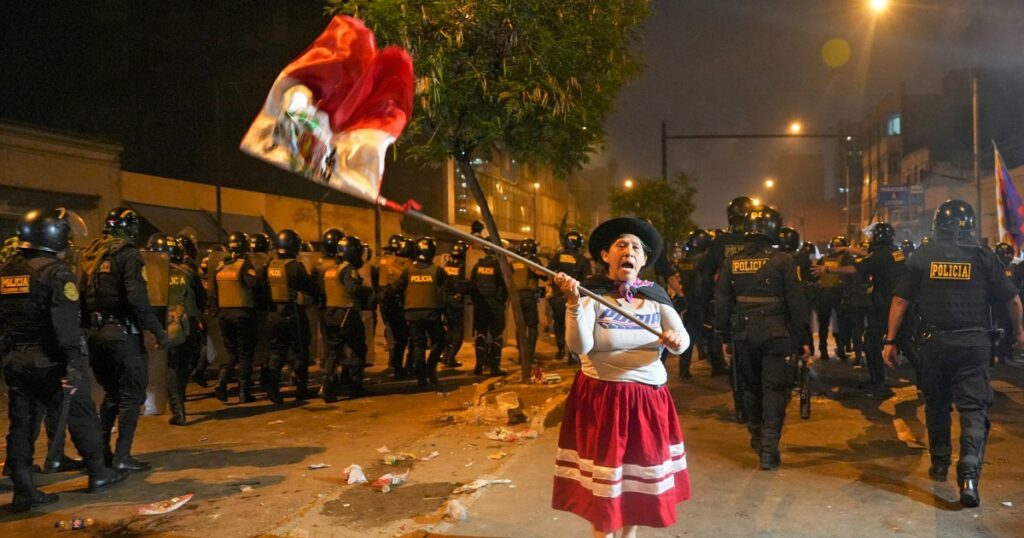The government of Peru has unleashed a massive and violent response against mostly Indigenous protesters who are trying to save Peruvian democracy. A Peruvian political crisis that has lasted decades entered a new and deadlier phase in December when then-President Pedro Castillo was removed from office by the country’s Congress, charged with rebellion and replaced by Vice President Dina Boluarte. Since then, at least 55 people have been killed and nearly 1,500 have been injured. The events of the last two months in Peru are yet another example of what happens to democratic societies when autocrats are allowed to run amok and silence the voices of the people they claim to govern.
The events of the last two months in Peru are yet another example of what happens to democratic societies when autocrats are allowed to run amok.
Given what’s been happening here in the United States, we should not ignore that lesson.
Castillo, a former teacher who identifies as a Marxist but is against same-sex marriage and abortion, was elected in 2021 thanks to strong support from poor and rural voters, the forgotten and marginalized voices of Peru. He was Peru’s fifth president in five years, and after that contentious election, Castillo’s right-wing opposition made sure he never really had a chance to succeed. His attempt to dissolve Peru’s Congress in December lacked military support, setting the stage for Boluarte to become Peru’s first female president.
Boluarte appears to have grossly underestimated the reaction that would come from the country’s rural and Indigenous populations. They’ve protested, clashing with security forces. The growing calls for her resignation have resulted in more violence. Earlier this month, Reuters reported that the country’s top prosecutor’s office said it was investigating Boluarte and two of her Cabinet members “on charges of ‘genocide, qualified homicide and serious injuries.'”
It would be a grave mistake for Americans to shrug this all…
Read the full article here





